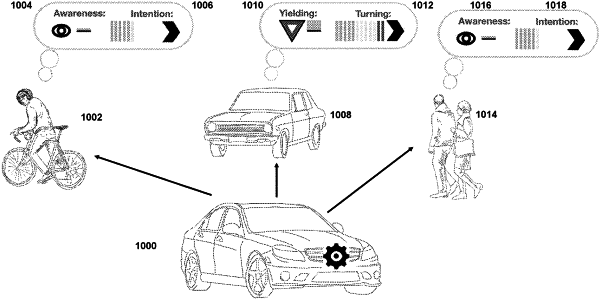| CPC B60W 60/00274 (2020.02) [B60W 30/00 (2013.01); G05D 1/0088 (2013.01); G06F 18/214 (2023.01); G06F 18/41 (2023.01); G06N 3/04 (2013.01); G06N 3/08 (2013.01); G06N 3/084 (2013.01); G06V 10/7784 (2022.01); G06V 20/41 (2022.01); G06V 20/58 (2022.01); G06V 40/20 (2022.01); G08G 1/04 (2013.01); G08G 1/166 (2013.01); G05D 2201/0213 (2013.01); G06N 5/01 (2023.01); G06N 20/10 (2019.01)] | 19 Claims |

|
1. A computer-implemented method comprising:
storing a plurality of images, each image displaying one or more users;
generating training data from the plurality of images, the generating comprising, for each image:
sending the image to a plurality of human observers, each human observer presented with a request to answer a question about a state of mind of a user in the image,
receiving, from each of the plurality of human observers, a response representing a judgment by the human observer of the state of mind of the user in the image,
generating summary statistics describing the state of mind of the user in the image based on the received responses from the plurality of human observers, and
storing the summary statistics in association with the image as part of the training data;
training a model using the training data, the model configured to receive an input image showing a user and predict summary statistics describing a state of mind of the user in the input image; and
executing the trained model to predict a state of mind of a user in a new image.
|